
Much like we've seen with color information in video, an audio image for the listener can be displayed
using two signals 90 degrees out of phase.
This allows us to create a visual display of the sound image.
The left and right channels are not actually out of phase.
The left is delayed in the 760 to enable this view of audio.
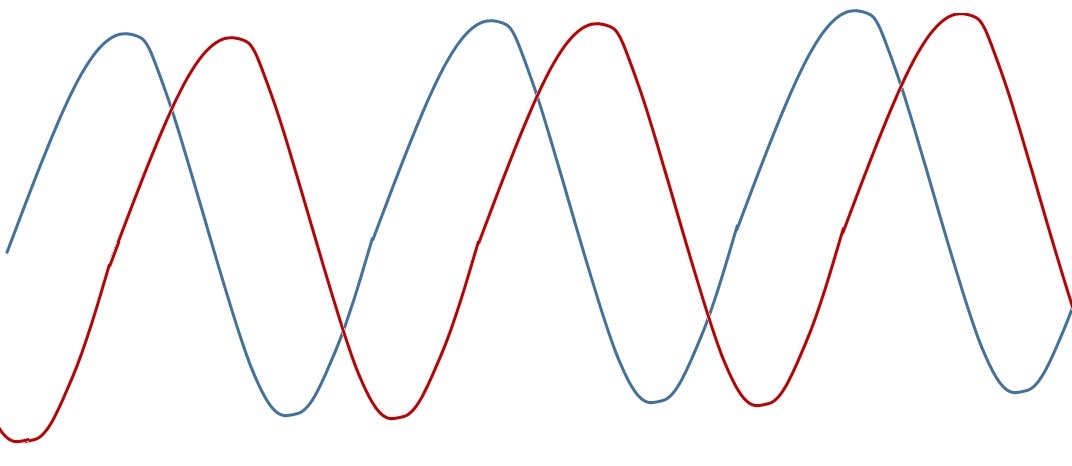
Here we'll assume the red signal is the left channel audio channel and the blue is the right channel
Above the two channels are 90 degrees out of phase
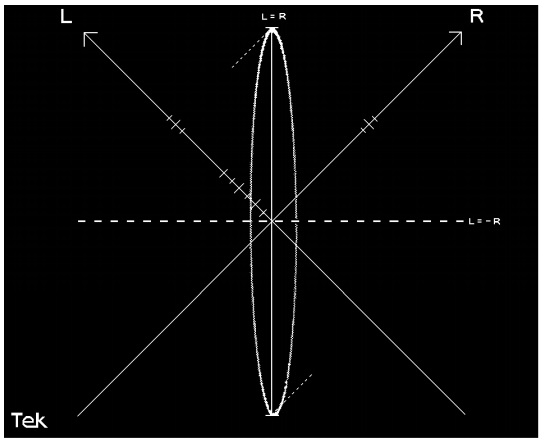
Above if both channels were exactly in phase you would see a staright vertical line along the L=R axis.
From the phase marks along the L axis (each mark represents 5 degrees) we can see the two channels are approxiamately 13 degrees out of phase.
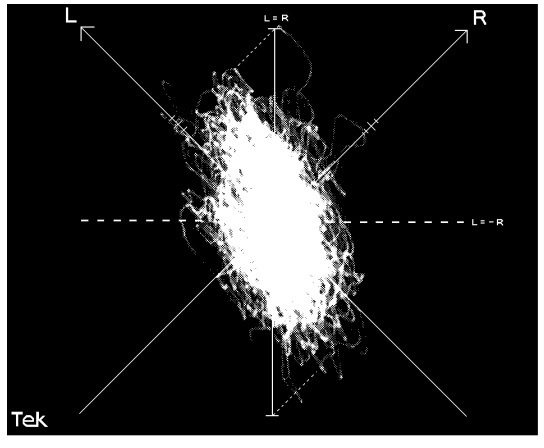
Above you can see there is more energy in the left channel than the right channel

Above the signal shows energy balanced between the L and R channels.
While this is good for downconverting to mono (single channel) it doesn't indicate a good separation of channels.
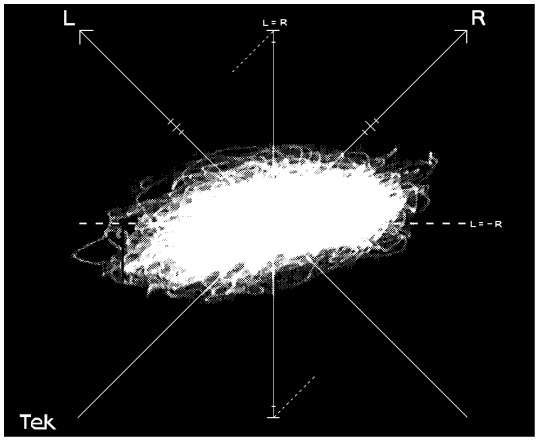
Above since the energy is along the L=-R axis, this indicates that one of the channels is inverted in regards to the other.
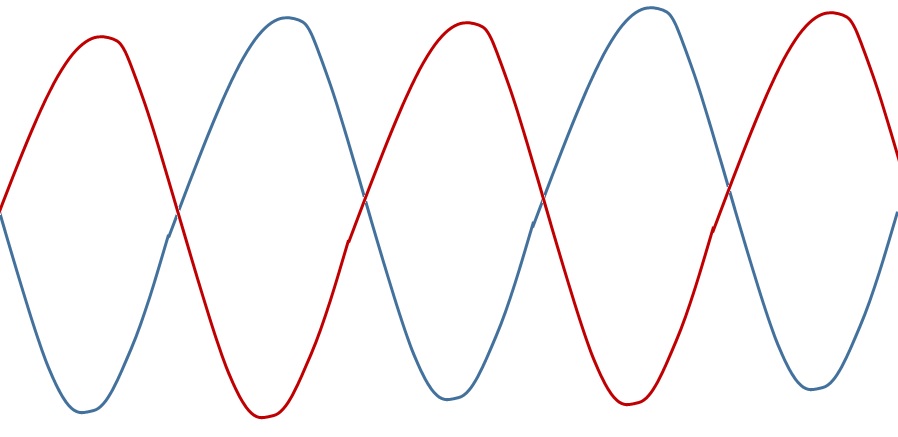
Above the two audio channels are 180 degrees out of phase from each other.
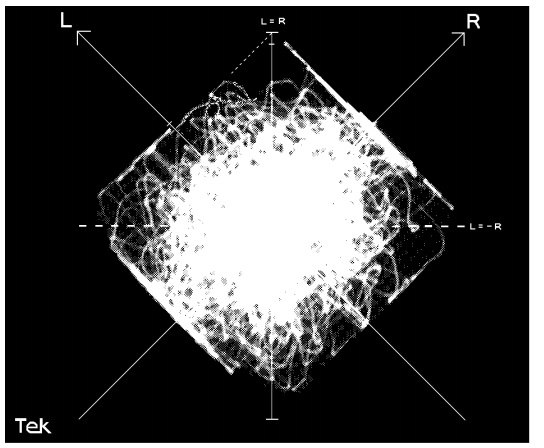
This is what audio clipping (chopping off the top of the signal) looks like.